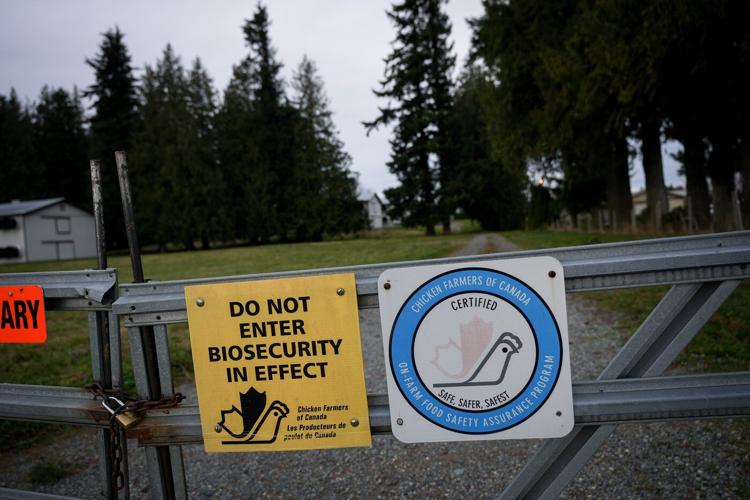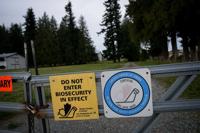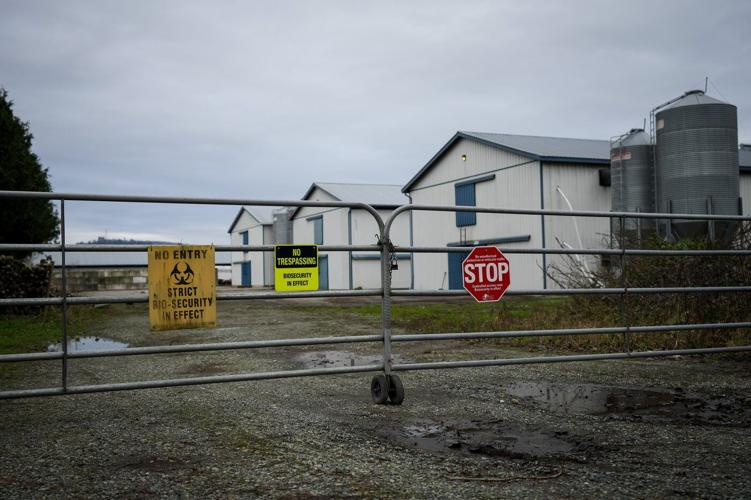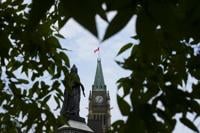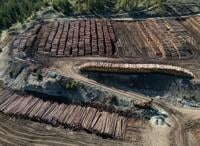VANCOUVER - There is a window of relief for British Columbia farmers from the devastating waves of avian flu, leaving them to assess the toll of outbreaks spanning more than three years that saw millions of birds culled at hundreds of farms.
Farmers and scientists also worry what the next migration of wild birds will bring this year.
Some farmers moved their operations outside British Columbia's Fraser Valley or have exited the industry altogether since the highly pathogenic H5N1 avian flu began circulating, said farmer Ray Nickel.
Nickel, who operates a farm in Abbotsford in the Fraser Valley, was forced to cull 60,000 chickens in the fall of 2022 due to avian flu. He said his flock of about 9,000 turkeys on another farm were also euthanized in 2023.
"It's just daunting, and the uncertainty about what's happening around you does weigh on you," Nickel said of the virus.Â
"We've had reoccurring events, particularly in the fall, and the amount of anxiety and stress that goes in for producers when this is going on is significant."
"Infection protocols" have been imposed on B.C. flocks 239 times since the first case was detected in the province in April 2022, but only six premises are currently infected, according to the ºÚÁϳԹÏÍø Food Inspection Agency.
More than 8.7 million commercial and backyard birds have been culled in the province, more than half the national toll of 14.5 million.Â
The agency said in January that the worldwide scale of the avian flu is "unprecedented and continues to have significant impacts on Canada's poultry industry." But there have been no new infections reported in B.C. since Jan. 11.
Nickel, who also serves as director of the BC Chicken Marketing Board, said farmers are feeling "relieved" at the moment, but there's an underlying concern about the virus persisting.
"Although there's relief that we seem to be out of it now, there's anxiety on what is next and what the next episode is possibly going to look like in the fall," he said.Â
"We've had some (farmers) that have certainly decided to move their operations out of the valley. We've also had producers that accelerate their succession planning and have decided to exit."
Farmers are diligent about safety measures, but researchers say it is currently impossible to know exactly how a virus is transmitted to flocks.
Troy Bourque, a veterinary operations specialist for the CFIA, said Canada first detected the highly pathogenic avian flu in 2021 and had since gone through six waves of outbreaks.Â
"They are both in the spring and fall during migration season. Over the last couple of years, particularly in B.C., we have seen larger outbreaks in the fall rather than the spring," he said, noting the Fraser Valley had been hit hard.
Bourque, the planning chief for avian influenza outbreak response, said it's too soon to say how this year's spring migration will impact poultry flocks.Â
"The challenge is highly pathogenic avian influenza is circulating in the wildlife population, and so we don't have a good idea of what the virus level is in those migratory birds," he said.Â
B.C. Chief Veterinarian Teresa Burns said preliminary research suggests fall migration periods are worse than spring because birds land and spend more time in the Fraser Valley. They seem to bypass the region in the spring, she said.Â
"Each fall, we've had quite a serious outbreak but we've actually been fortunate to have no infections in the spring last year, although the year before, there were some infections in the spring period."
Burns said all influenzas mutate and the H5N1 strain that emerged in 2021 is "significantly worse than other strains that we've had historically."Â
She said the hope is that wild birds develop more immunity and the virus mutates into a less damaging strain.
Pandemic researchers worry that avian flu could mutate into a widespread human illness, and Bourque noted human transmission is "always a concern because these viruses can infect mammals, including humans, which is another reason why we don't want it in our domestic bird population — because it is a threat to humans."
However, person-to-person transmission of H5N1 is considered very rare.
Canada reported its first domestically acquired human case of bird flu on Nov. 9, 2024. The teenage patient became very ill, and spent two months in a B.C. hospital. She was discharged in January and authorities said they do not know how she was infected.Â
The federal government announced in February that it had purchased 500,000 doses of a bird flu vaccine as a proactive measure, pointing to guidance that says high-risk people, such as farm workers exposed to infected animals, should be prioritized for the shot.
Bourque said that "if poultry is handled properly, it is safe. There's no risk for bird flu by eating any poultry or eggs."
He said the industry is very focused on biosecurity to prevent introduction of the virus to flocks. But, when it happens, the CFIA follows a strict protocol.
Farmers are mandated to report suspicion of avian flu in flocks to the CFIA. Bourque said the agency will quarantine the farm as it administers diagnostic tests. Then, if tests are positive, the animals are ordered to be destroyed.Â
He said that on large farms, the animals are killed using CO2 gas, while for smaller flocks the bird's necks are broken. Then, they are buried or composted.
The process isn't finished after the birds are destroyed. Bourque said that the completion of disposal triggers outbreak surveillance of the surrounding 10 kilometres — also referred to as a control zone — to ensure the virus did not spread.Â
"Outbreak surveillance is a minimum of 28 days," he said. "So, it has to be disease free for at least 28 days before that zone can come down."
The CFIA pays market value for any animal that is culled, to encourage farmers to report outbreaks.
"It is quite costly, but I think it's important to understand that we do this to keep that disease out of our domestic flock, because the disease itself is very costly. Our poultry export is a billion-dollar-a-year industry," Bourque said.Â
The farmers must pay the cost of cleaning and disinfection and "any loss of production," he said.
Nickel said that's one of reasons the past three years have been emotionally and often financially taxing.
He said when he was forced to euthanize his flock in 2022, disinfection cost him more than $2,000. Then there's the farm workers who are forced to stand down when an infection is detected.Â
"It's not fun. Nobody wants this," he said.
This report by ºÚÁϳԹÏÍø was first published April 6, 2025.

